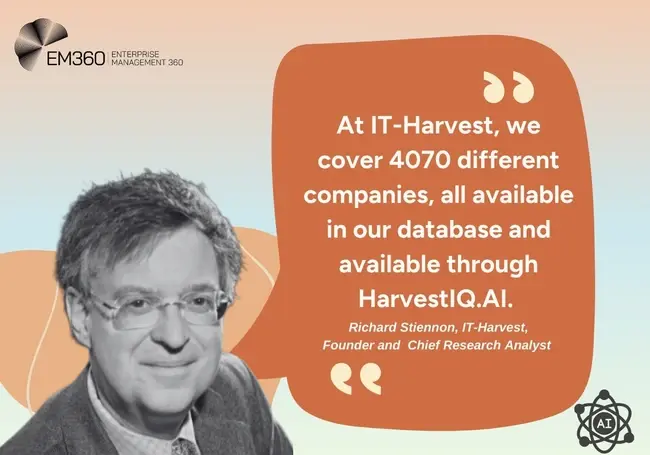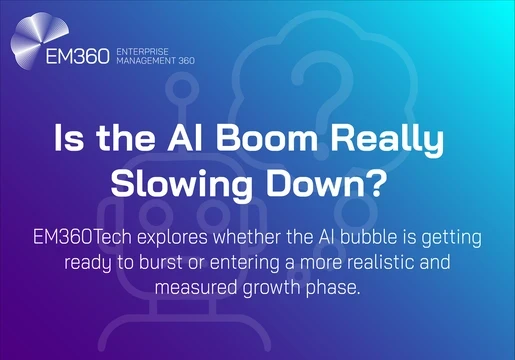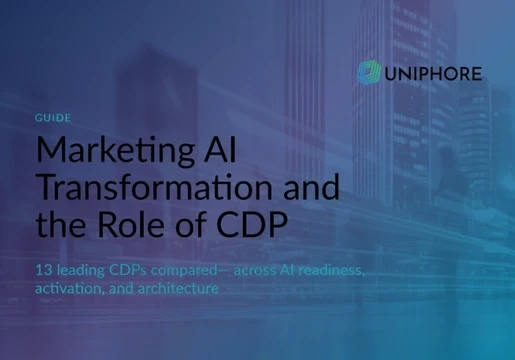A cybersecurity analyst, Emily Barn tasked with assessing a new endpoint protection solution. It would take the analyst hours to compile a list of vendors with specifications aligning with the company.
But imagine the Barn could just as easily turn to an AI assistant instead of spending hours researching and comparing vendors by simply prompting the question, "What are the top-rated endpoint protection solutions for mid-sized businesses?"
This is where IT-Harvest’s new product called HarvestIQ.AI comes in.
IT-Harvest, a data-driven industry analyst company launched HarvestIQ.AI, a platform featuring two AI assistants designed to deliver actionable intelligence that allows users to stay ahead of evolving demands on their teams.
For instance, HarvestIQ.AI instantly provided Barn with a list of the most relevant options, complete with detailed comparisons and reviews. Sarah can quickly narrow down her choices and select the best solution for her company.
Just within the first few hours of launching, HarvestIQ.AI received 36 inquiries and trial requests. HarvestIQ.AI is like having a cybersecurity expert on your team 24/7.
The AI assistants from IT-Harvest help enterprises cut through the noise and choose the right cybersecurity products. Unlike other solutions that only cover the big players, HarvestIQ.AI has data on over 4,000 vendors to help businesses find the perfect fit for their needs.
EM360Tech’s Shubhangi Dua interviews Richard Stiennon, founder and chief research analyst at IT-Harvest on the company’s latest product called HarvestIQ.AI.

1. What is HarvestIQ.AI all about? What makes it different from other cybersecurity company solutions out there?
Harvest.IQ is IT-Harvest’s first AI assistant that is designed to help security architects and security teams choose cybersecurity products. The big problem we're addressing is the product discovery and selection process, which right now gets the job done, but it's somewhat broken.
There's an ecosystem of advisors, consultants, and industry analysts who are supposed to recommend products and help guide people in their product selection. The whole area is called decision support. I started looking at the Gartner coverage of the cybersecurity space because, at IT-Harvest, we cover 4070 different companies, all available in our database and available through HarvestIQ.AI.

When we found out that Gartner covers fewer than 250 companies, actually closer to 150 and that's less than 2 percent of the entire industry, and you can do that in any industry. You just cherry-pick the top 150 companies, and you'll pick the Cisco's, Microsoft's and Google's. You'll pick the big vendors.
But cybersecurity has a lot of very specific problems that are addressed by very specific companies, and it might be hard to find them with a Google search. We've been searching for them continuously for three years since IT-Harvest’s dashboard launched.
We believe we've discovered 98 percent of these problems, and we've captured all the products. They are available through a chat interface with HarvestIQ.
2. How is HarvestIQ.AI relevant to enterprises today?
We created essentially a cybersecurity architect that you can just ask any questions to, and it’ll gladly answer them with very verbose answers.
It completes comparisons between products and helps you actually find the companies that have products alignment with mitre attack and NIST CSF 2.0 just have all this information available in an AI that can answer your questions.
3. What was the biggest challenge you faced while developing HarvestIQ.AI? How did you overcome it?
The biggest challenge is still the cost of using large language models (LLMs). Think of the traditional SaaS model, you can create a product once, and you've got no marginal cost for additional customers. When you tie it into an Anthropic or ChatGPT or Gemini from Google, you incur costs every time somebody asks a question.
We've been monitoring those costs for a full 24 hours now since we launched, and they're averaging about 10 cents per question. So we've got a free service. We let you ask 20 questions a month, but that cost can more than double as the memory increases.
If you want a conversation with HarvestIQ’s assistance, the longer the conversation goes, the more expensive the questions get, up to 24 cents per question. So you can see the cost rack go up. We actually haven't solved that yet but we know the solution, which is to onboard our own LLM so we only incur the computing costs, not the token costs from from the vendors.
Also Read: Offline AI Helps Businesses Tackle Unpredictable Environments, Says Vivoka CPO
4. How did you ensure the accuracy and reliability of the data provided by HarvestIQ.AI's assistance?
Our approach in embedding the tools keeps the AI assistance focused just on our data, so it doesn't go outside of what we tell it to know other than when it has to go outside to be able to interpret questions and respond in English.
The daily tasks at IT-Harvest are ensuring the accuracy of our data. We’re constantly filtering, looking for anomalies in our data. This is the first time a vendor has been able to access it for free, with a trial, we offer on our platform. It allows them to query the assistant about their own company and products, and then they can give us feedback.
The difference between IT-Harvest and some of the other decision-support solutions such as G2 where people provide their feedback is that we can't be gamed. We've got nobody from the outside telling us how to think of a company. We make the decision about what category they're in. They don't get to make up a category or claim that they're part of a made-up category from Gartner. We make all those decisions so we already have objective and better information about companies than PitchBook does.
We've just got to keep an eye on hallucinations. We haven't seen a single hallucination yet so I believe we’ve corralled the AI's tendency to do that.
Also Read: How Luxonis Helps Enterprises Scale Vision AI Models | Interview With Bradley Dillon, CEO
5. What are the future plans for HarvestIQ.AI?
The vision is that you'll be able to have an avatar. Imagine a full video that joins you on a Zoom call and contributes to discussions about cybersecurity, architectures and products. We're planning to take steps in that direction.
While it would be exorbitantly expensive to launch when the technology is available, we hope to be ready. Possibly, we could introduce an email server so users can email their questions to the assistant and get responses for an easy workflow.
This quarter, we are recording or recognising the intent of a question. It will then programmatically figure out how to get the AI to answer it. For instance, today, if you asked how many cybersecurity vendors are headquartered in California, you would get a similar response as ChatGPT. It would be something like, “There are many cybersecurity vendors. Here are some of them…”.
This is because LLMs commonly known can’t count, they can't do math of any sort, but they're really great at creating SQL queries. Here, we judge the intent of the question and turn it into an SQL query that would answer the question: “Do the SQL query”. The LLM would interpret it and give it back to you in a useful format. It would tell you that there are 770 vendors based in California.
6. What would be your advice to cybersecurity professionals considering using your product?
Our product, HarvestIQ, will give you superpowers. No matter what level in the organisation, whether you’re currently a student, it may well be worth having access to the product, if you're anybody in the organisation that deals with cybersecurity, it could be important to have this knowledge. It just gets to the answers a lot faster than Google does.
For the actual security architecture teams at large enterprises, IT-Harvest offers a lot more. The HarvestIQ is entry level charging $179 a month. We have both the dashboard, and our platform, priced at $18,000 a year for receipt and API access.
We're discovering that large enterprises already are building decision-support solutions providing access to massive decision-support software. However, it just doesn't have the data, and that data is available. We sell it to you as an API as it’s very easy to integrate with our APIs.







Comments ( 0 )